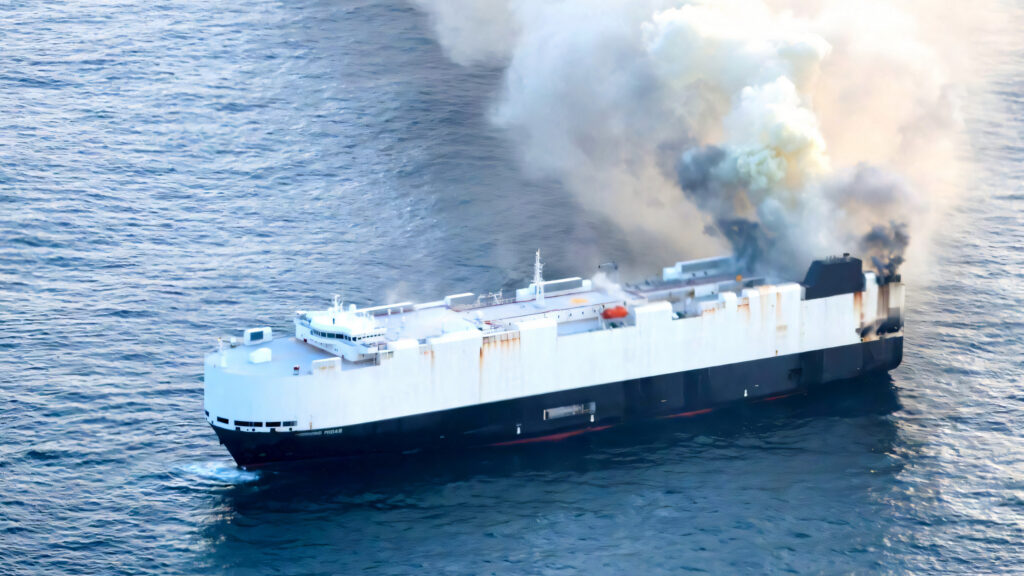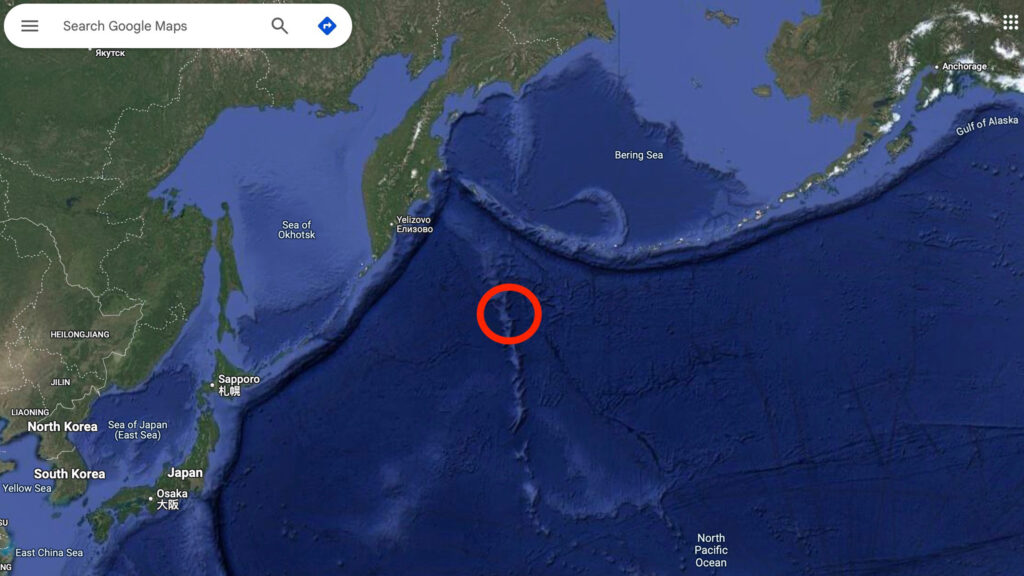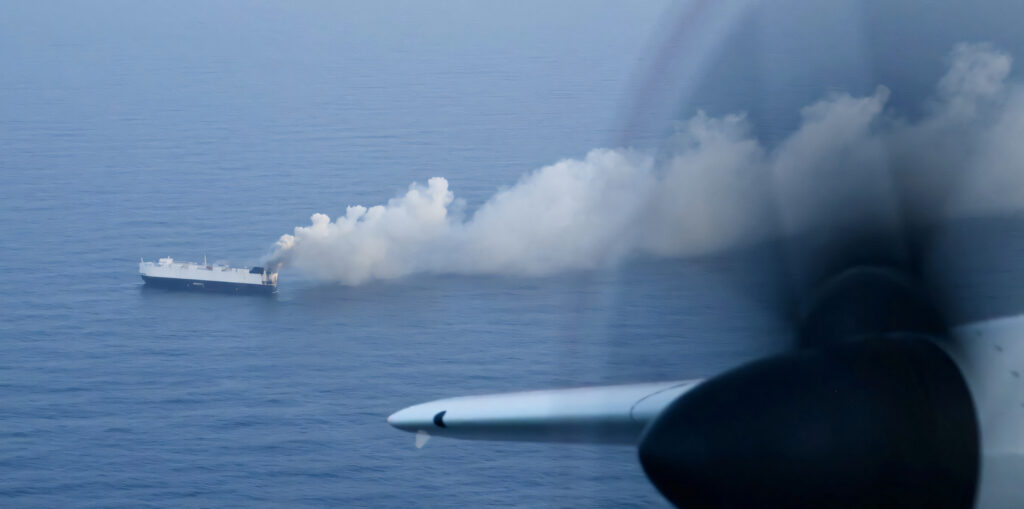Ship Fire Dilemmas

Imagine the scene: a cargo ship loaded with over 3,000 vehicles, including a tantalizing mix of electric and hybrid models, catches fire in the middle of the Pacific Ocean. This isn’t the beginning of a thriller novel but rather a real-life incident involving the ship Morning Midas. On a routine journey from China to Mexico, the ship was struck by misfortune when a fire erupted, leading to the crew’s evacuation.
The Incident

At the heart of the calamity was a 600-foot Liberian-flagged vessel managed by Zodiac Maritime, a UK company. While it was roughly 300 miles south of Adak, Alaska, a blaze began to rage. Despite swift action by the crew to engage onboard fire-suppression systems, the fire proved too rebellious to contain. It was revealed that among the 3,048 vehicles onboard, 70 were purely electric, and another 681 featured hybrid-electric technology.
Thankfully, all 22 crew members survived, thanks to the gallant efforts of nearby ships, including the motor vessel Cosco Hellas, which swooped in to rescue the stranded seafarers. The U.S. Coast Guard’s Rear Admiral Megan Dean commended the selfless actions that saved lives. However, details on when or how the smoldering ship might continue its journey, or if the cars onboard would be salvageable, remain cloudy.
Electric Vehicles and Fire Risks

Electric vehicles have long been touted as the future of automotive travel. However, recent shipping disasters like this have brought attention to the unique challenges they pose. With the Morning Midas, the fire broke out in a section with electric vehicles, igniting concerns about their potential combustibility under certain conditions.
This isn’t a first for shipboard fires involving EVs. A similar incident occurred three years ago with the Felicity Ace, a cargo ship hauling luxury cars like Porsche and Lamborghini, which ended in a tragic capsizing in the Atlantic. The cost to insurers was enormous, estimated at $155 million. While EV sales surge, hesitancy among shipping companies grows. Some, like Norway’s Havila Kystruten, outright refuse to transport electric vehicles due to perceived risks.
The Challenge Ahead
The predicament for the shipping industry is daunting. As electric vehicles take an increasing share of the market, logistics for transporting these cars safely across oceans must adapt. Yet shipping remains the chief method for distributing vehicles globally. The incident serves as a sobering reminder of a problem that needs addressing sooner rather than later to reassure shipowners and EV manufacturers alike.
Staying informed is crucial as this story unfolds and more information becomes available. This incident emphasizes the broader implications for the shipping and automotive industries in handling electric vehicles safely.
Image Credits: U.S. Coast Guard courtesy of Air Station Kodiak
Daihatsu Move Returns
Mazda's EV Revolution
Hemi Roars Back
Hemi V8 Returns
Ford Explorer Recall